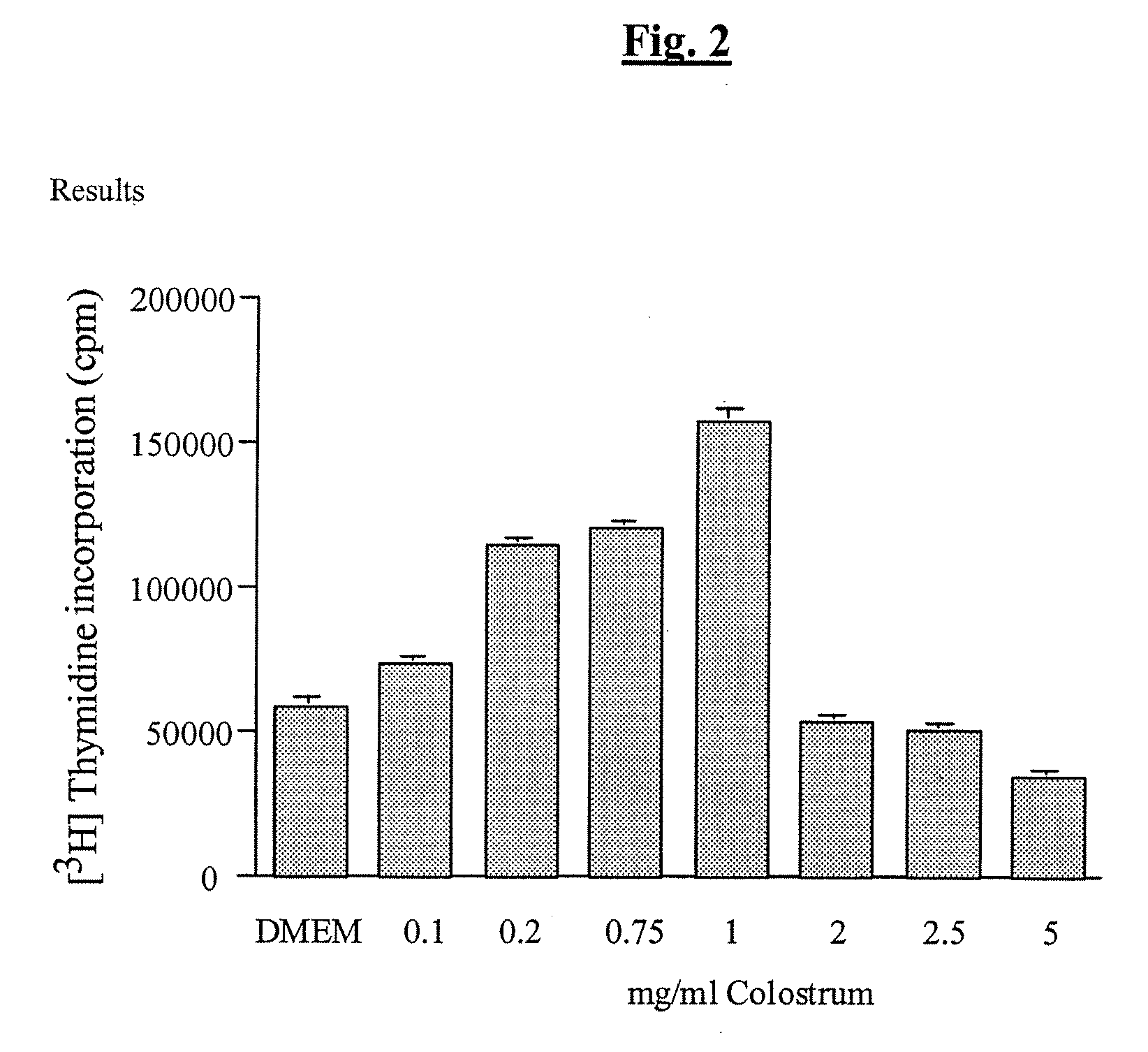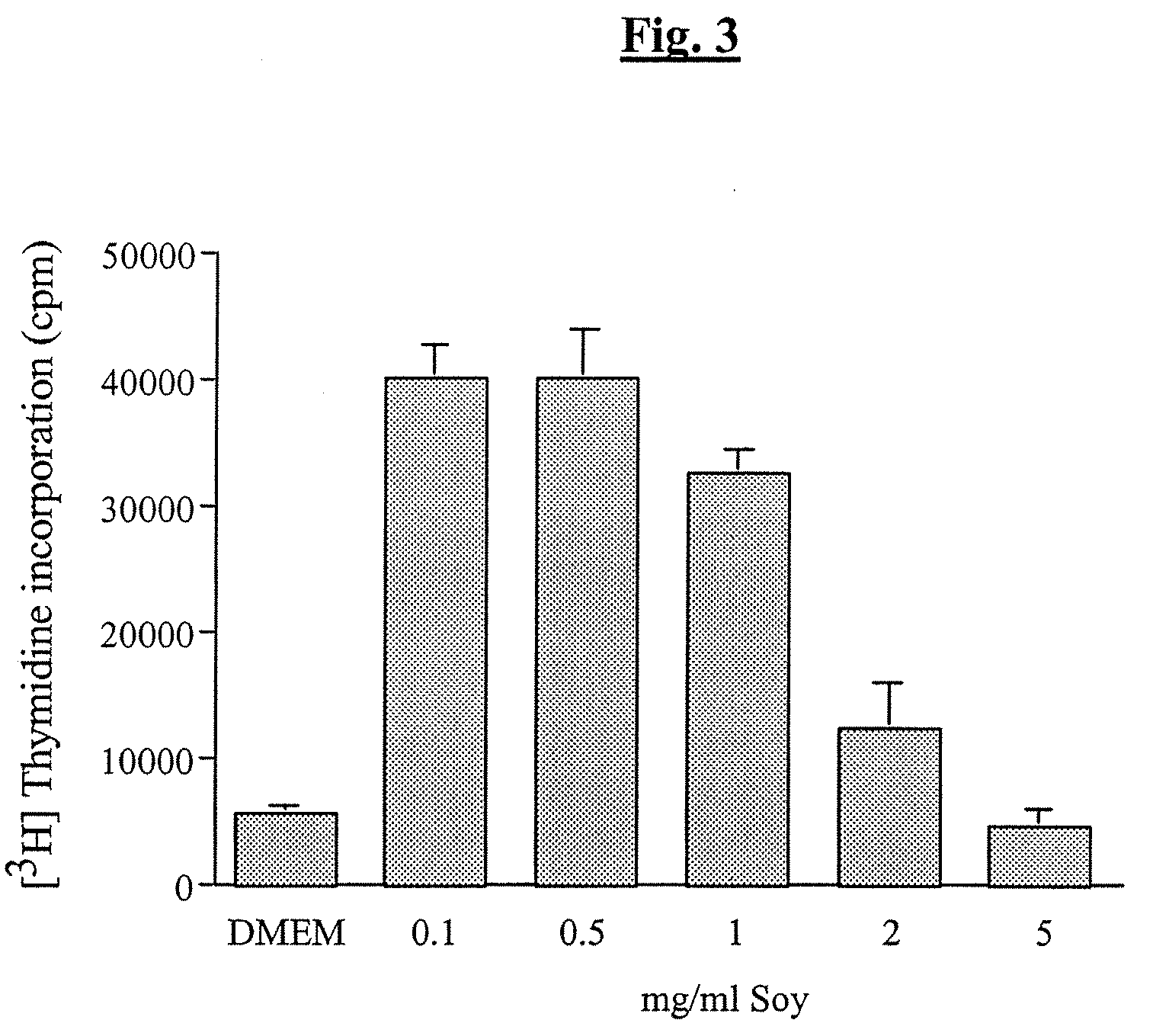Bioactive Agent Compositions for Repair of Cell Injuries
a technology of bioactive agents and compositions, which is applied in the direction of biocide, plant growth regulators, plant ingredients, etc., can solve the problems of epithelial cell lining inflammation, medical treatment, gastrointestinal system, etc., and achieve enhanced bioactive agents, enhanced bioactive agents, and prevention of ons
- Summary
- Abstract
- Description
- Claims
- Application Information
AI Technical Summary
Benefits of technology
Problems solved by technology
Method used
Image
Examples
example i
Effect of Colostrum as a Bioactive Agent on Cell Proliferation in Intestinal Cells
[0101] As discussed above, an increase in the rate of cell division plays a key role in reestablishing a normal mucosa along the epithelial or endothelial tissue lining following an injury (FIG. 1d). Cell culture models have traditionally been used as surrogate markers for this proliferation response. Because thymidine is a natural constituent of the DNA culture, thymidine incorporation is commonly used as a marker of proliferation. Cells that are actively dividing will therefore increase their uptake of thymidine in the preparatory state of cell division.
[0102]FIG. 2 demonstrates the results of a typical experiment. The human colonic cancer cell line HT-29 obtained from the European Collection of cell Cultures (www.ecacc.org) was grown in a solution of DMEM-containing glutamine and 10% fetal calf serum. The effects of a commercially available colostral preparation obtained from Sterling Technology o...
example ii
Effect of Soy Protein on Cell Proliferation of Intestinal Cells
[0104] HT-29 cells were grown in the same manner as for the Example I protocol, except that different amounts of soy protein isolate (Cargill's PROLISSE ISP-521IDP) were added to the wells instead of colostrum, at concentrations ranging from 0.1 to 5 mg protein / ml. The results for thymidine incorporation for these soy protein samples and the negative control are shown in FIG. 3. As can be clearly seen, a typical bell-shaped dose response curve is present with maximal stimulatory effect being found in the range of 0.1-1.0 mg protein / ml.
example iii
Effect of Colostrum, Soy Protein, and Licorice on Cell Proliferation in Intestinal Cells
[0105] To examine the effect of licorice on cell proliferation and begin to examine its relative efficacy against colostrum and soya, the following experiment was performed. HT-29 cells were grown in the same manner as for Examples I and II, except that a single dose of colostrum (1 mg protein / ml), soya (0.1 mg protein / ml) and licorice (0.1 mg protein / ml) were added to different wells. The doses of 1 mg protein / ml colostrum and 0.1 mg protein / ml soya were chosen based on the results of the preliminary studies shown as Examples I and II. As can be clearly seen, the colostrum, soy and licorice all increased the amount of thymidine incorporation compared to the negative control (DMEM).
PUM
 Login to View More
Login to View More Abstract
Description
Claims
Application Information
 Login to View More
Login to View More - R&D
- Intellectual Property
- Life Sciences
- Materials
- Tech Scout
- Unparalleled Data Quality
- Higher Quality Content
- 60% Fewer Hallucinations
Browse by: Latest US Patents, China's latest patents, Technical Efficacy Thesaurus, Application Domain, Technology Topic, Popular Technical Reports.
© 2025 PatSnap. All rights reserved.Legal|Privacy policy|Modern Slavery Act Transparency Statement|Sitemap|About US| Contact US: help@patsnap.com



